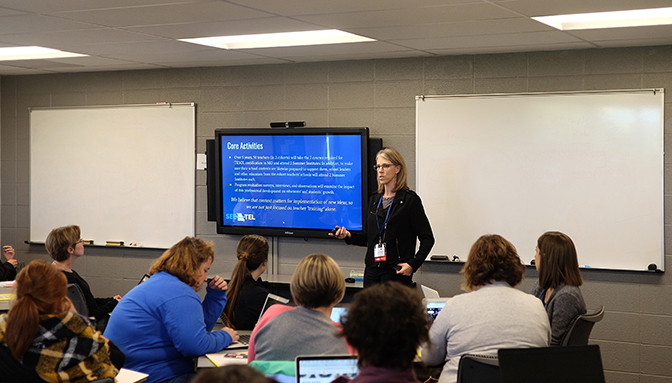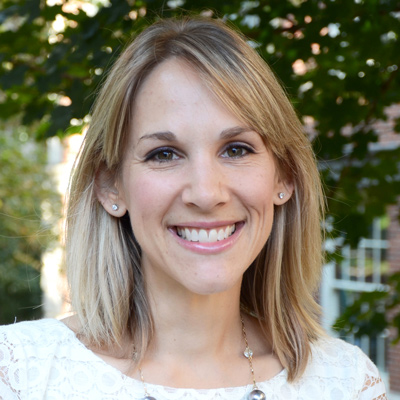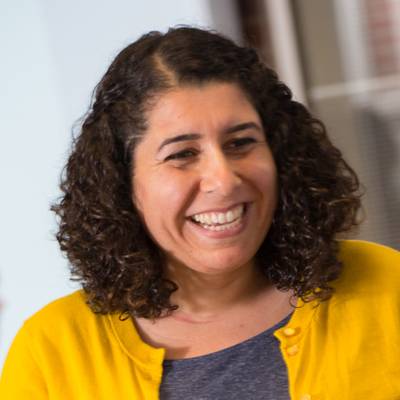SEE-TEL: Working to Improve English Learner Instruction in Missouri
$2.6 million grant to prepare hundreds of educators with new strategies
A new research grant will improve instruction for students who are designated as English Learners (ELs) in Carthage, St. Louis, Columbia and Kansas City.

Strengthening Equity and Effectiveness for Teachers of English Learners (SEE-TEL) is a five-year, $2.6 million National Professional Development Grant from the U.S. Department of Education, Office of English Language Acquisition. Kim Song, an associate professor at the University of Missouri-St. Louis, is the primary investigator (PI), along with co-PI Lisa Dorner, an associate professor in the Department of Educational Leadership & Policy Analysis (ELPA) at the University of Missouri College of Education.
 Since 2004, the total English Learner enrollment in Missouri has doubled to more than 38,000 students. SEE-TEL focuses on graduate coursework, professional development institutes, and school-community partnerships, with the goal of preparing hundreds of educators with effective new strategies for instruction and family engagement. Professional development focuses on highlighting the linguistic and cultural gifts that children bring to their schools.
Since 2004, the total English Learner enrollment in Missouri has doubled to more than 38,000 students. SEE-TEL focuses on graduate coursework, professional development institutes, and school-community partnerships, with the goal of preparing hundreds of educators with effective new strategies for instruction and family engagement. Professional development focuses on highlighting the linguistic and cultural gifts that children bring to their schools.
SEE-TEL serves new immigrant communities across the state, including the Carthage R-IX District, the Bayless School District in St. Louis, Columbia Public Schools, and Kansas City Public Schools. One of the primary goals is to provide Teaching English as a Second Language (TESOL) courses and certification for 50 in-service teachers. The vision is to help all teachers be prepared to instruct English Learners who are integrated into their classrooms.
“If I’m a high school algebra teacher and 50 percent of my kids are coming from other language backgrounds, how do I teach math in a way that builds on their home language knowledge and skills, recognizing all the resources they bring into the classroom?” Dorner said. “Rather than thinking, ‘Oh, the EL teacher is going to take care of them,’ we want to shift that mindset to have those classroom teachers share that responsibility and know what to do. Frankly, we don’t teach that, especially in a state like Missouri. We’re trying to change that conversation.”
Faculty from across the SEE-TEL project also provide workshops for the state, such as at the latest Conference on Collaboration and Co-Teaching event recently sponsored by the Department of Elementary and Secondary Education. Training focused on supporting teachers’ growth and acceptance of using multiple languages in the classroom.
“Many educators try to force our immigrant families and children to use an English-only approach,” said Song. “So we want teachers to recognize communication doesn’t have to use English only. We like to use transcultural, as well as translanguaging, approaches.”

The project is a team effort that draws from various fields across the MU College of Education including school leadership, math education and language and literacy. Emily Crawford-Rossi, an associate professor in ELPA, provides research expertise on immigration and education policy, as well as ethics.
“The SEE-TEL grant project is a unique, proactive and practical approach to preparing Pk-12 educators in every community, from rural to suburban to urban, that has experienced demographic change or may expect to change as our country’s demographic landscape continues to evolve,” said Crawford.

“The focus on drawing on students’ cultural and linguistic resources in the classroom is crucial to emergent bilingual students’ success,” said Zandra de Araujo, an associate professor of mathematics education in the Department of Learning, Teaching, and Curriculum. “SEE-TEL is supporting teachers in understanding language acquisition in conjunction with providing access to rigorous content learning. Teachers who complete this program will be among the most prepared in Missouri to meet the needs of emergent bilingual students in their classrooms.”